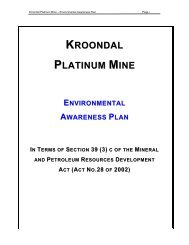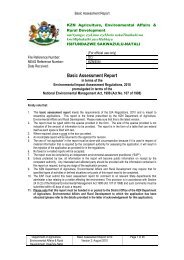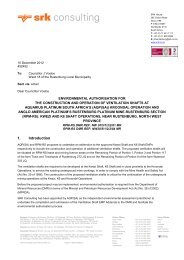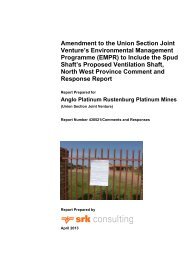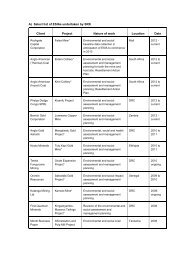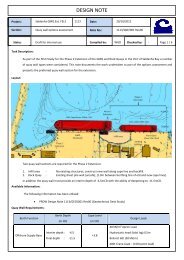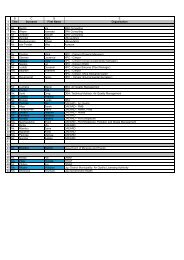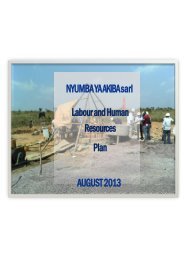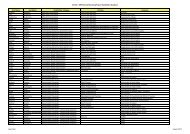Biodiversity (1 - SRK Consulting
Biodiversity (1 - SRK Consulting
Biodiversity (1 - SRK Consulting
You also want an ePaper? Increase the reach of your titles
YUMPU automatically turns print PDFs into web optimized ePapers that Google loves.
6.4. Herpetofauna<br />
6.4.1. Field Surveys<br />
The study site visit was conducted on 27-28 June 2011. During the site visits, reptiles and<br />
amphibians were identified by visual sightings through random transect walks.<br />
Amphibian diversity was also established by means of acoustic identification. No<br />
trapping was conducted, as the terms of reference did not require such intensive<br />
work. The observed and derived presence of reptiles and amphibians (herpetofauna)<br />
associated with the recognised habitat types of the study site, was recorded. This<br />
was done with due regard to the well-recorded global distributions of Southern<br />
African vertebrates, coupled with the qualitative and quantitative nature of recognised<br />
habitats. Where possible, the adjoining properties were scanned for important fauna<br />
habitats.<br />
Three criteria were used to gauge the probability of occurrence of reptiles and<br />
amphibian species on the study site. These include known distribution range, habitat<br />
preference and the qualitative and quantitative presence of suitable habitat.<br />
6.4.2. Desktop Surveys<br />
As the majority of reptiles and amphibians are either secretive, nocturnal,<br />
poikilothermic and/or seasonal, distributional ranges and the presence of suitable<br />
habitats were used to deduce the presence or absence of these species based on<br />
authoritative tomes, scientific literature, field guides, atlases and data bases. This<br />
can be done with a high level of accuracy irrespective of season.<br />
The probability of the occurrence of reptile and amphibian species was based on<br />
their respective geographical distributional ranges and the suitability of on-site<br />
habitats.<br />
High probability would be applicable to a species with a distributional range overlying<br />
the study site as well as the presence of prime habitat occurring on the study site.<br />
Another consideration for inclusion in this category is the inclination of a species to<br />
be common to the area, i.e. normally occurring at high population densities.<br />
Medium probability pertains to a reptile or amphibian species with its distributional<br />
range peripherally overlapping the study site, or required habitat on the site being<br />
sub-optimal. The size of the site as it relates to its likelihood to sustain a viable<br />
SATO Aggeneys July 2011 41



